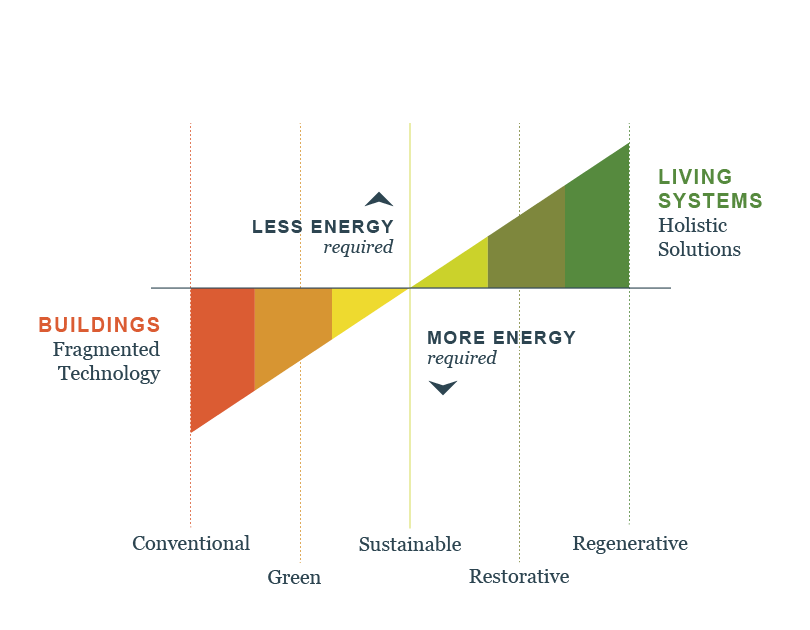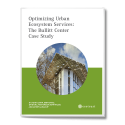Project partners:
2013 – 2014
We normally think of nature’s benefits originating far from where we live and work. Water, for example, comes from springs or snowfields high up in the mountains and somehow ends up in our city faucets. But in fact, nature benefits us and can even benefit from us, within city limits. Buildings play an important role in creating and sustaining those benefits.
Take the Bullitt Center in Seattle. By avoiding toxic materials, using wood harvested sustainably from nearby forests, providing on-site water filtration, relying exclusively on solar energy and composting sewer systems, and locating in a central city location, the Bullitt Center actively enhances the greater ecosystem of Seattle. A new report from Ecotrust and Autopoiesis, LLC, supported by the Bullitt Foundation, finds that those innovations contribute $18.45 million over the life of the building.
The Bullitt Center has been called the “World’s Greenest Office Building.” And it’s a candidate for the Living Building Challenge, the world’s toughest standard for ecological building design. It marks the continued evolution of building design, towards regenerative buildings that actively restore surrounding landscapes and communities.
If we can show that regenerative buildings create more value than conventional ones, how would that change the building industry? We’d see fewer buildings built with toxic materials and dependent on aging utility grids. We’d see architects and developers design a building for a long time horizon—say, 250 years, as they did for the Bullitt Center. With each new structure, we would contribute toward goals on a range of national, state, and local government policies, including climate change mitigation and adaptation. Our urban communities would become healthier, happier, and more aware of the benefits of designing with nature in mind.

We have been steadily moving from low-efficiency, high-toxicity conventional buildings to green buildings. The Bullitt Center is a key example of this transformation, blurring the lines between buildings and nature while opening the possibility that the built environment can give back more of nature’s benefits than it consumes.
Ecotrust Project Team & Services
Want to learn more? Check out the full Ecotrust Staff & Board and all of our Tools for Building Collective Change.


Former staff: Brent Davies
Resources

Report
With an ever-increasing majority of people living in urban areas, the role of ecosystem services production within urban boundaries cannot be ignored. The ability of these urban areas to provide quality of life over time is inextricably linked to our ability to integrate ecosystem services into our urban planning and design practices. This report shows how the Bullitt Center offers a dynamic new approach to understanding and optimizing ecosystem services in built environments.